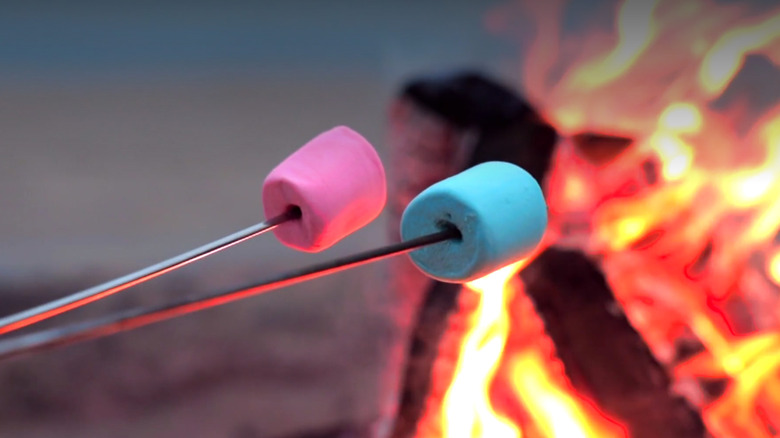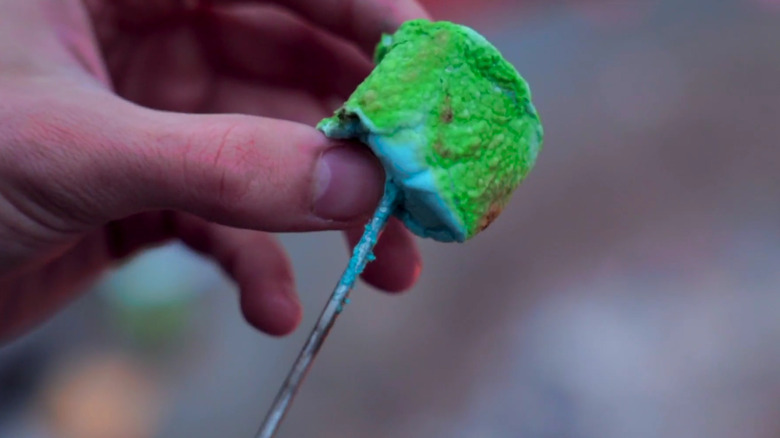Color-Changing Marshmallows Are Going To Be The Next Campfire Rage
Whether you're five or 55, one of the most exciting parts about roasting marshmallows over a hot fire is watching them change color before your eyes. When heated, marshmallows usually transform from white to a golden brown (that is, of course, unless you burn them). This happens to countless foods, from bread in the toaster to pepperoni on pizza, and is caused by something called the Maillard reaction — a chemical reaction that occurs when an amino acid reacts with a sugar in response to heat. The Maillard reaction likely occurs in marshmallows due to the amino acids in the gelatin, as well as the high sugar content of the candy. Add this to the roaring red and yellow flames from the burning wood of the campfire, and roasting marshmallows is just about the most colorful occasion you can imagine.
However, Jet-Puffed found a way to brighten up this popular summer pastime even further. According to Food & Wine, the brand has introduced two new limited-edition marshmallows with a twist: They change color upon contact with heat — from pink to orange and blue to green — making the s'mores color palette something entirely different.
How does food change color?
Jet-Puffed is one of many brands hopping on the color-changing trend that continues to take the food world by storm. Starbucks has color-changing cold cups that transform when you pour liquid into them, while color-changing cakes continue to be a hugely popular option for gender reveals (especially on TikTok, where videos tagged "#colorchangingcake" have millions of views). It makes sense that marshmallows are shaping up to be the next rage, especially with the internet boom around sweet treats like colorful, nostalgic candy — not to mention candy salads with mini marshmallows.
Although Jet-Puffed hasn't revealed how its formula works, foods usually change color due to a simple chemical reaction that alters their pH. According to food scientist Gregory Ziegler, who spoke to Newsweek, naturally occurring pigments called anthocyanins change color when they come into contact with high-acidity foods. This transforms their appearance, usually from blue to red. As well as by acidic substances, pH is also affected by changes in temperature. Higher temperatures cause the pH of a substance to decrease by increasing the amount of H+ ions, which in turn changes its color. Heat also helps to break down the cell walls of fruits, such as blueberries, and releases the pigments in anthocyanins to cause a vibrant color explosion.

